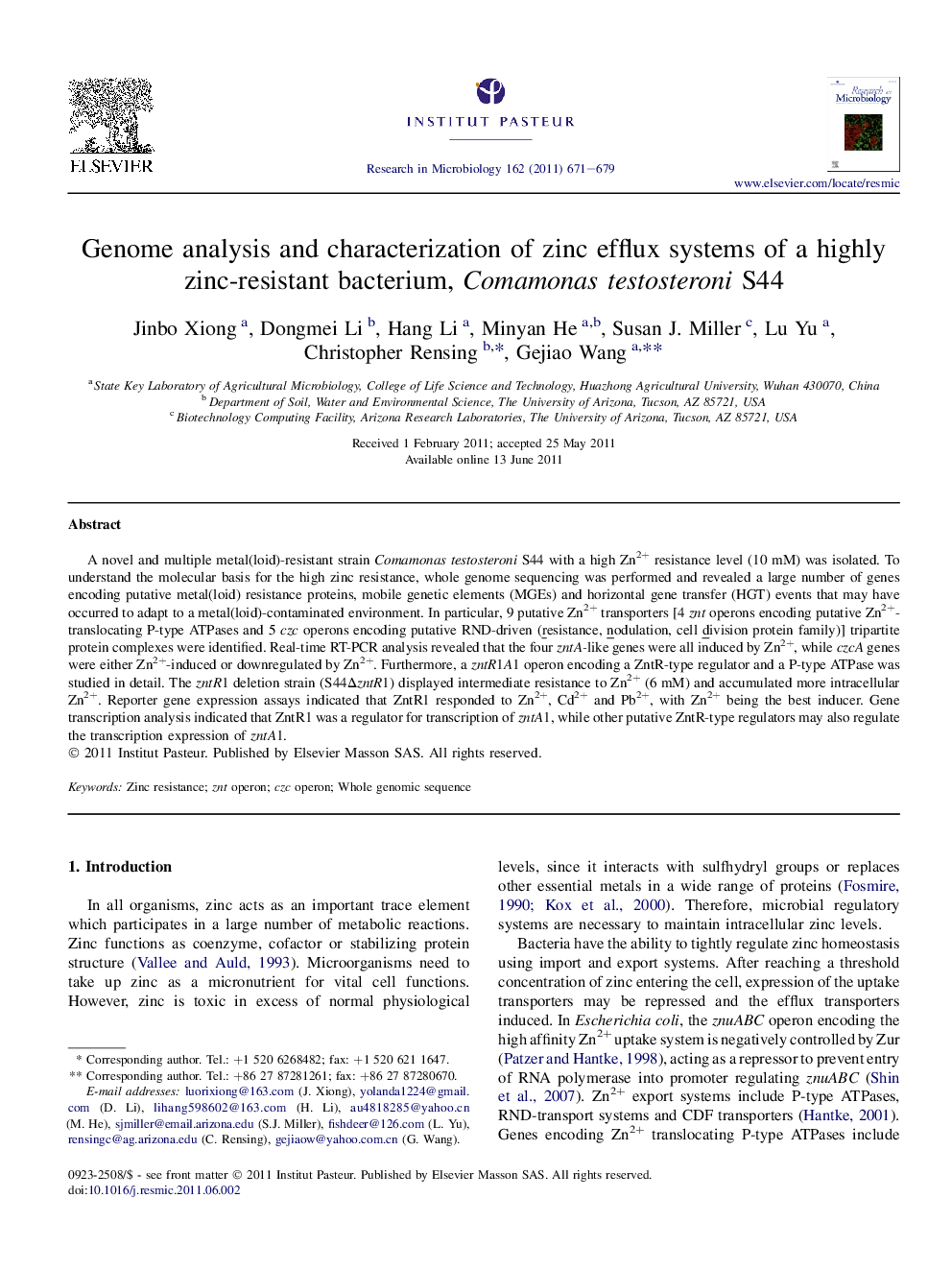| کد مقاله | کد نشریه | سال انتشار | مقاله انگلیسی | نسخه تمام متن |
|---|---|---|---|---|
| 4358934 | 1300471 | 2011 | 9 صفحه PDF | دانلود رایگان |

A novel and multiple metal(loid)-resistant strain Comamonas testosteroni S44 with a high Zn2+ resistance level (10 mM) was isolated. To understand the molecular basis for the high zinc resistance, whole genome sequencing was performed and revealed a large number of genes encoding putative metal(loid) resistance proteins, mobile genetic elements (MGEs) and horizontal gene transfer (HGT) events that may have occurred to adapt to a metal(loid)-contaminated environment. In particular, 9 putative Zn2+ transporters [4 znt operons encoding putative Zn2+-translocating P-type ATPases and 5 czc operons encoding putative RND-driven (resistance, nodulation, cell division protein family)] tripartite protein complexes were identified. Real-time RT-PCR analysis revealed that the four zntA-like genes were all induced by Zn2+, while czcA genes were either Zn2+-induced or downregulated by Zn2+. Furthermore, a zntR1A1 operon encoding a ZntR-type regulator and a P-type ATPase was studied in detail. The zntR1 deletion strain (S44ΔzntR1) displayed intermediate resistance to Zn2+ (6 mM) and accumulated more intracellular Zn2+. Reporter gene expression assays indicated that ZntR1 responded to Zn2+, Cd2+ and Pb2+, with Zn2+ being the best inducer. Gene transcription analysis indicated that ZntR1 was a regulator for transcription of zntA1, while other putative ZntR-type regulators may also regulate the transcription expression of zntA1.
Journal: Research in Microbiology - Volume 162, Issue 7, September 2011, Pages 671–679